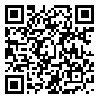Volume 3, Issue 1 (january 2019)
AOH 2019, 3(1): 268-275 |
Back to browse issues page
Download citation:
BibTeX | RIS | EndNote | Medlars | ProCite | Reference Manager | RefWorks
Send citation to:



BibTeX | RIS | EndNote | Medlars | ProCite | Reference Manager | RefWorks
Send citation to:
Ahmadi O, Samaei S E, Farokhzad M, Rasoulzadeh Y. Identifying Hazardous Points in Foundry Industry Using a Hybrid Safety Approach . AOH 2019; 3 (1) :268-275
URL: http://aoh.ssu.ac.ir/article-1-111-en.html
URL: http://aoh.ssu.ac.ir/article-1-111-en.html
1- Department of Occupational Health, Tabriz University of Medical Sciences, Tabriz, Iran
2- Department of Occupational Health Engineering, Tarbiat Modarres University, Tehran, Iran
3- Department of Occupations Health, Hamadan University of Medical Sciences, Hamadan, Iran
4- Department of Occupational Health, Tabriz University of Medical Sciences, Tabriz, Iran ,Rasoulzadehy@yahoo.com
2- Department of Occupational Health Engineering, Tarbiat Modarres University, Tehran, Iran
3- Department of Occupations Health, Hamadan University of Medical Sciences, Hamadan, Iran
4- Department of Occupational Health, Tabriz University of Medical Sciences, Tabriz, Iran ,
Abstract: (2712 Views)
Background: In recent years, the foundry industry has had a significant impact on Iran's economy. However, the health and safety conditions of this industry are in an unfavorable status, and these conditions have caused a lot of accidents. In this regards, one of the most important ways to prevent accidents in this industry can be identifying hazardous points and adopting appropriate control measures. The aim of the study was to identify hazardous points in foundry industry using a hybrid safety approach. Methods: This descriptive-analytic study was conducted in the foundry industry of Iran, in 2016. The study method consisted of two parts. First, the accidents of foundry were analyzed. Second, the Energy Trace and Barrier Analysis (ETBA) technique was used to identify hazards and assess the risks. The collected and obtained data of accidents and risk assessment were entered into the statistical SPSS software, version 22, and descriptive statistics (mean, percent) were used for analyzing. Also, Microsoft Excel was used to plot the graphs. Results: A total of 128 risks is identified, including 17 unacceptable risks, 93 undesirable risks, 13 acceptable risks with revision and five acceptable risks without revision. The mechanical and physical energies had the highest percentage of hazards. The results of accidents analysis showed that the cause of most accidents (40%) was mechanical, while 23% of them was the potential type. The study results indicated that accidents analysis along with risks identification can be useful in identifying all the dangerous locations (points). Conclusion: In addition to validating the results of risk assessment through the analysis of accidents, other causes affecting the occurrence of accidents can also be covered by accident analysis, including unsafe behaviors and organizational causes that are not seen in the risk assessment.
Send email to the article author
| Rights and permissions | |
 |
This work is licensed under a Creative Commons Attribution-NonCommercial 4.0 International License. |







